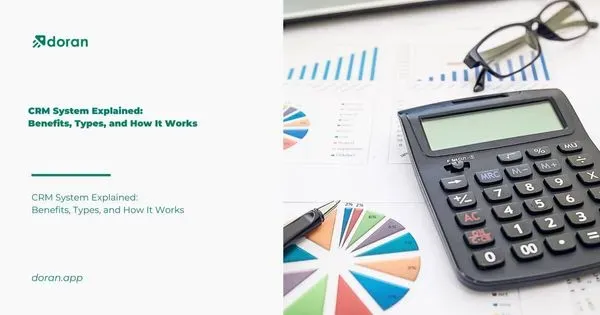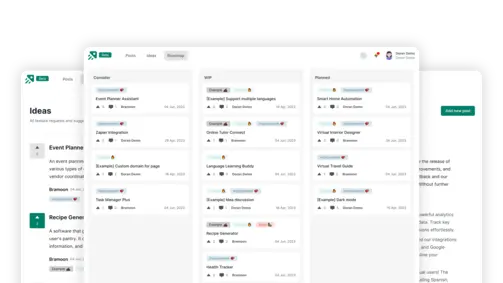Customer Effort Score Survey: Questions and Tips
Create changelog and product roadmap for your product
Explore nowTable of contents 7 min
In the ever-evolving landscape of customer satisfaction metrics, the Customer Effort Score survey has emerged as a crucial tool for businesses aiming to enhance their customer experience. This article delves into the definition of Customer Effort Score (CES), explores the optimal moments to apply effort scores to customers, discusses the various types of CES questions, offers valuable insights on drafting effective CES questions, provides tips for creating a successful Customer Effort Score survey, and finally, unveils the formula for calculating CES Customer Effort Score.
Customer Effort Score (CES) Definition
Customer Effort Score (CES) is a metric designed to measure the ease with which customers can achieve their goals when interacting with a product, service, or brand. It focuses on the level of effort a customer has to exert to complete a specific task or resolve an issue. CES is typically measured on a scale, ranging from “very difficult” to “very easy,” allowing companies to assess the overall customer experience. By understanding the level of effort required, businesses can identify pain points and make improvements to enhance customer service and loyalty.
Read more: What is CES survey? Typical Questions With Examples
When To Apply Effort Score To Customers
Right Away following an Interaction that Resulted in a Purchase or Subscription
Timing is crucial when gauging customer effort. By assessing the effort immediately after a positive interaction leading to a purchase or subscription, businesses can capture the immediate sentiment and satisfaction levels of their customers.
This allows businesses to address any potential issues or concerns promptly, ensuring a positive customer experience. Additionally, applying effort scores right away can provide valuable insights into the effectiveness of sales or marketing strategies, helping businesses make informed decisions for future interactions.
Right Away following a Customer Interaction or an Experience of your Service
Regularly checking in on customer effort after any interaction or service experience provides businesses with valuable real-time data. This allows for quick identification of pain points and areas that require improvement.
To support UI and UX Testing Conducted by Product Teams
Integrating Customer Effort Score into User Interface (UI) and User Experience (UX) testing can provide insights into the overall usability and accessibility of a product. This synergy ensures that efforts are directed towards enhancing not just functionality but also user satisfaction.
By incorporating Customer Effort Score into UI and UX testing, product teams can gain a deeper understanding of how the product’s design and features impact customer satisfaction. This information can then be used to make informed decisions on how to improve the user experience and make the product more user-friendly. Ultimately, this approach helps businesses prioritize customer needs and deliver a seamless and enjoyable experience.
Customer Effort Score Question
Likert Scale

One of the common methods of measuring Customer Effort Score is through Likert scale questions. These questions typically ask customers to rate their experience on a scale, usually ranging from “Very Easy” to “Very Difficult.” The simplicity of the Likert scale makes it easy for customers to express their opinions clearly.
This method allows businesses to gather quantitative data on the level of effort customers perceive when interacting with their products or services. By analyzing the aggregated responses, companies can identify areas of improvement and prioritize efforts to reduce customer effort. Additionally, the Likert scale questions can be easily incorporated into Customer Effort Score surveys or feedback forms, making it a convenient tool for collecting customer insights.
Emoticon Ratings

Incorporating emoticons into Customer Effort Score surveys adds a visual and emotive component to customer responses. Customers can choose an emoticon that best represents their experience, providing a quick and engaging way to gather feedback.
This can help companies better understand the emotional impact of their products or services on customers, allowing them to tailor their offerings to meet customer expectations and preferences. Moreover, the use of emoticons can also make the feedback collection process more enjoyable for customers, increasing response rates and overall Customer Effort Score survey participation.
Find out more: Choosing the Right CES Survey Tools for Your Business
Things to Keep in Mind When Drafting CES Questions
When crafting CES questions, clarity and relevance are paramount. Ensure that questions are straightforward and directly relate to the customer’s recent experience. Avoid jargon or complex language that may confuse respondents.
It is also important to consider the length of the questions and keep them concise. Long and convoluted questions may lead to confusion and decrease response rates. Additionally, it is crucial to include a mix of closed-ended and open-ended questions to gather both quantitative and qualitative feedback from customers.
Consider the specific touchpoints in the customer journey where effort matters most. Tailor questions to capture insights at key moments, such as during the purchasing process, customer support interactions, or product usage.
You can get insightful input that will help you pinpoint areas for development and improve the entire customer experience by concentrating on these important touchpoints. Finally, before distributing the Customer Effort Score survey to a wider audience, it is imperative that it be pilot tested with a limited subset of consumers. This will enable you to spot any possible problems or ambiguities in the questions and fix them before gathering data more broadly.
Tips on Creating a Successful Customer Effort Score Survey
-
Keep it Short and Simple: Long Customer Effort Score surveys can lead to survey fatigue and reduced response rates. Focus on the most critical aspects of the customer journey to keep the Customer Effort Score survey concise.
-
Use a Mix of Question Types: Combine Likert scale questions with open-ended questions to gather both quantitative and qualitative insights. This comprehensive approach provides a holistic view of customer effort.
-
Test and Iterate: Before deploying the Customer Effort Score survey at scale, conduct small-scale tests to identify any potential issues with question clarity or Customer Effort Score survey flow. Regularly update the Customer Effort Score survey based on customer feedback and changing business needs.
Formula for Customer Effort Score calculation
Getting an average score (X out of 10) is one of the simplest ways to assess CES findings. A scale of 1 to 10 for the Customer Effort Score is typically used for this. Just divide the total of your CES scores by the number of responses you have gotten.

Your Customer Effort Score (CES) score is 7 (out of 10) if 100 respondents completed your survey and the total of their scores is 700.
Which CES is Good?
Determining what constitutes a “good” Customer Effort Score depends on various factors, including industry benchmarks, the nature of your business, and the specific touchpoints being measured. Generally, a lower CES score indicates higher customer satisfaction, as it implies minimal effort on the customer’s part.
However, it’s essential to compare your CES against industry standards and competitors to gain a more nuanced understanding. Regularly tracking and analyzing CES trends over time allows businesses to identify improvements or regressions in the customer experience.
In conclusion, the Customer Effort Score survey is a powerful tool that provides valuable insights into the ease of customer interactions. By strategically applying CES at key touchpoints, utilizing diverse question formats, and calculating scores accurately, businesses can refine their customer experience strategies and foster lasting customer loyalty.
What to not miss out on our blog
Gain insightful knowledge and invaluable experiences from dedicated experts.

CRM System Explained: Benefits, Types, and How It Works
Discover everything about CRM system. Learn the benefits and how a CRM system works to improve customer relationships and streamline business operations.

Are you ready? Start your free trial today.
Enhance communication, keep track of the progress, understand customers' insight and more by taking your first trial on Doran.
Sign up for free

